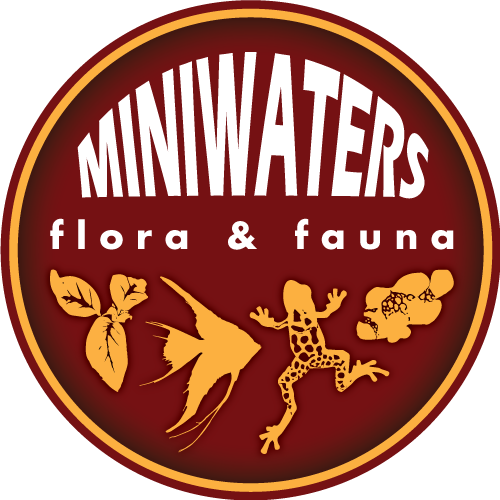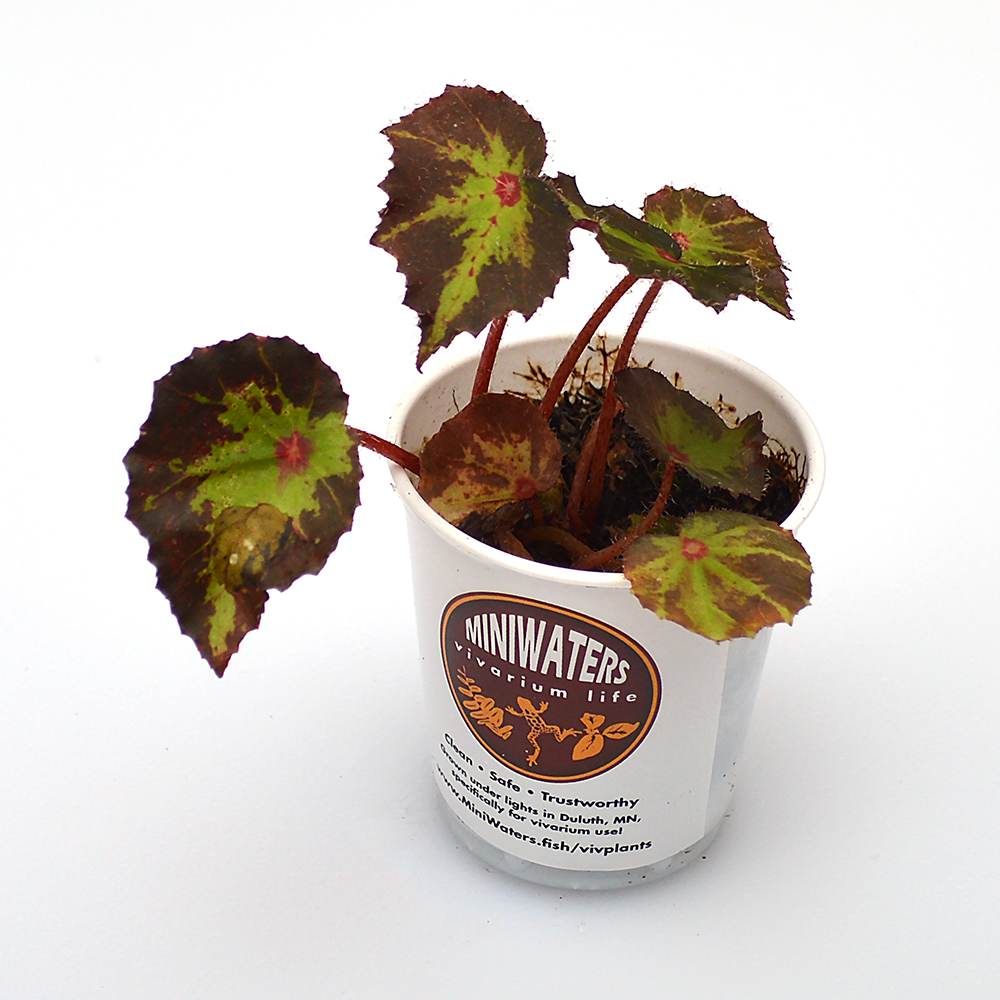MiniWater’s vivarium plant offerings are *primarily* wholesale only; we strongly believe in supporting the independent pet retailers, whenever possible. Our retail partners know that we only offer things at retail if we can’t sell them wholesale, and we’ll never undercut a retailer with a lower retail price online.
Shop owners – If you just need some quick links, I understand! Here they are:
- Wholesale Inquiries
- Why we produce and offer vivarium plants
- What your customers will learn when they visit the web address on our packaging!
- Need an immediate conversation? Call MiniWaters at 218-206-1225
I have a confession to make…
Don’t get me wrong, I’ll have fish swimming in my veins ’til the day I die, but I’m about to tell you about my mistress. You see, I’ve been kinda cheating on my beloved aquarium hobby for the past couple years. I hope you can forgive me for the deep dark secret I’m about to spill.
When The Aquarium You Love Lets You Down
Everyone has an idealized vision in their head of what it means to have an aquarium in their home. We walk into this hobby infatuated with aquatic life, and visions of tranquil natural scenes bringing the ocean or an idyllic jungle stream into our homes.
Sometimes (often) what an aquarium hobbyist aspires to create, fails to materialize in their homes. Everyone dreams of crafting a gorgeous reef aquarium or an Amano-inspired planted aquascape, but the expense, the technical knowledge, the time commitment or the inherent risks of keeping aquatic life get the better of a fish keeper. Setbacks or outright calamities are part of the aquarium hobby…if you do it long enough, you will suffer some tough times.
This is the reason why we so often talk about the sad suggestion that the average home aquarist is often in and out of the hobby in just 18-months. From a local fish store’s perspective, failing to keep their customers in the hobby is a hit to the bottom line; it’s lost future revenue potential. It’s also really disappointing to watch people go from the joy of new love, to the utter abyss of despair once the honeymoon phase wears off.
Mending an Aquarist’s Broken Heart
When I first worked in the retail pet store setting some 25+ years back, I remember the days where fish-only saltwater tanks dominated the hobby. Aquarists were generally encouraged to start with larger tanks due to stability, dozens if not hundreds of gallons, yet often holding only a few big show fish. Often times, these customers would have invested thousands in their setups, only to be disappointed when they were told that their tanks were full with only a handful of fish, or they could never get past the scourge of algae or Crytopcaryon, or worst still the losses without any explanation. Distraught, they’d wind up in the shop asking how they could sell their used aquarium and get out of the hobby.
We don’t tell our sons and daughters to give up on love and embrace celibacy after the first teenage romance sours…so why do we just let our frustrated aquarists leave the pastime behind in droves?
The bottom line? The tank, and the goal, were a mismatch for the aquarist.
It was these frustrated aquarists who I’d walk over to the freshwater department to show them tanks crowded with bright yellow, blue, red and orange African Cichlids. They could dispense with mixing saltwater, probably use all their equipment and maybe even keep their decor if they wanted, while potentially keeping dozens or hundreds of colorful and active fishes in the tank that they were about to sell off for pennies on the dollars.
I didn’t “save” every distraught marine aquarist this way, but I certainly did keep many from leaving the aquarium hobby altogether. There was a reason that the freshwater department out-grossed an equally sizable saltwater offering.
Today’s Frustrated Aquarist
A lot has changed since I first entered the aquarium industry nearly 30 years ago (wow…that long!) Today’s aquarium hobby is more technical than ever. The aesthetic bar has been pushed sky-high between amazing freshwater aquascapes and the most stunning of reef aquaria. What was a stunning tank in the 1990s would probably be a travesty today!
With all our advances, we’ve come to better manage our aquariums too…so small tanks are more prevalent than ever before.
But nowhere along the way did we dispense with the learning curve. If anything, it may have become even more difficult for a hobbyist to feel successful, because the bar has been raised so much higher. And with it, the expense of achieving these visual goals has risen.
So really, we’re still faced with the same problem. People who try to do something, and often fail. I believe that the #1 predictor of a hobbyist’s longevity in the aquarium hobby is probably their resilience and tolerance level for failure. At the end of the day, we simply have aquarists with higher expectations than ever before, but the same inherent risks and obstacles that no amount of product or technology can truly assuage.
People are always going to leave the hobby, which means a lost customer for you. What can you do?
Allow me to introduce my secret lover, the “Terrestrial Reef Tank” – aka. the Vivarium Hobby
Perhaps I’ll save the story of how I wound up keeping vivariums and dart frogs for another occasion, but I often summarize it with this joke. It’s as if a drug dealer walked up to his best cocaine customer and said, “Look, if you think you love this cocaine, man just wait ’til you try this heroin!”
Seriously, I remember turning down my friend saying “no, seriously, I don’t need ANOTHER hobby,” and yet here I am now professing how great it is and how it can even be of benefit to the bottom line of the independent, mom & pop type pet retailer or aquarium shop.
And I already hear what you’re saying…I don’t have enough time/space/insert your excuse here for another hobby or product line. Perhaps. Perhaps you also don’t like keeping your customers longer than 18 months…you’re more the love ’em and let ’em go type?
All my jokes aside here’s what matters. The vivarium hobby is the terrestrial version of a reef aquarium or planted freshwater tank. But when you take away the WATER, interesting things happen:
- No water changes
- No water testing
- No leaks or spills
- No pumps to fail
- No noise (unless you have rather raucous animal life)
What do you do instead?
- Mist it (this can be automated)
- Feed it (if you put animals in it)
Vivariums Eliminate Nearly All The Downsides of Aquariums
Seriously, this is just about the easiest thing you could imagine. And it was THAT which got me hooked. Again, long story short, 10 years ago I didn’t have 2 children…and that right there should be enough for anyone who’s a parent to understand that maintaining 2000+ gallons of water is easier when you’re child-free!
Here’s another way to look at it – if a plant fails to thrive in a vivarium…it wasn’t a $100 Acropora that melted away overnight.
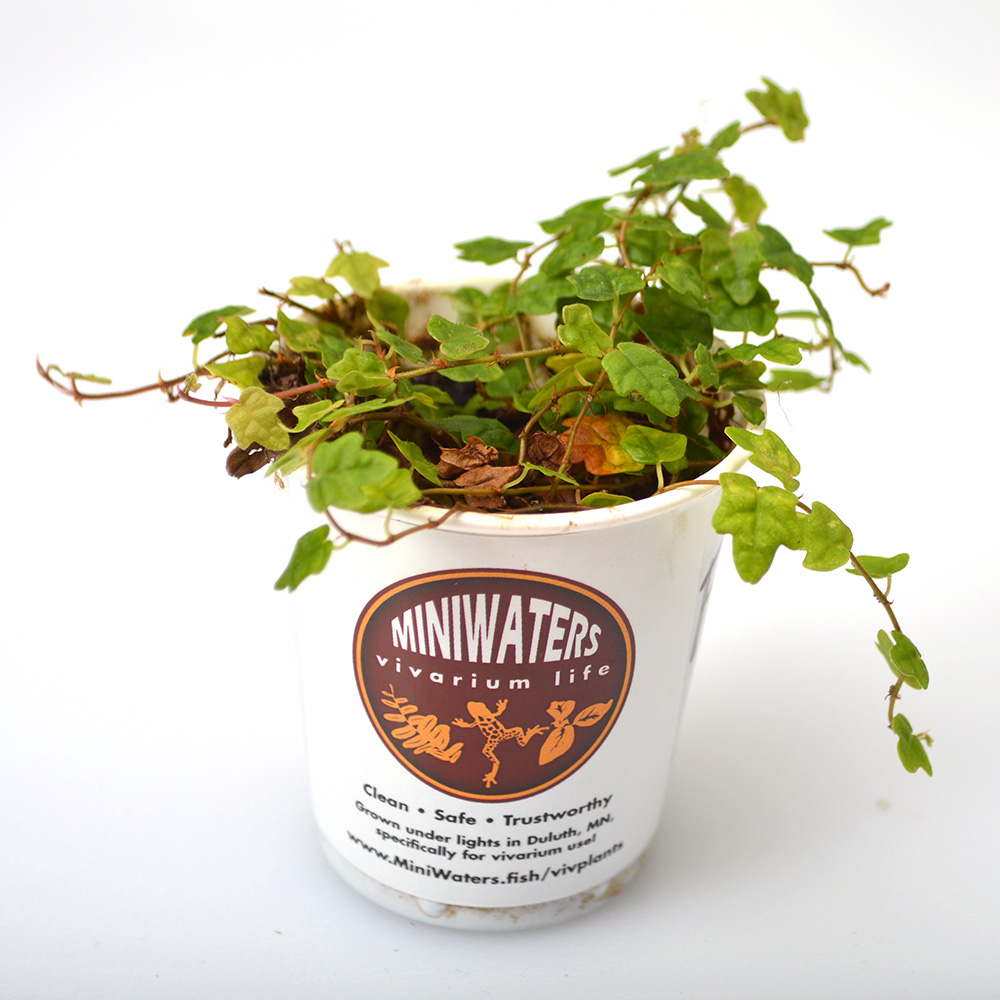
Introduce Them To A Love That Won’t Disappoint
And there it is. When you think about why someone who set up their first reef tank is all upset and ready to leave the hobby, remind yourself, it just wasn’t a good match. It was too expensive, too difficult, too failure prone, too technical. Find out why they failed, and then walk them over to your amazing vivarium display.
Show them the lushly growing plants, the endless shades of green punctuated by a riot of color and seemingly never ending diversity of form as the plants carpet, climb, and ramble over wood and leaves as they create a slice of the jungle in your living room.
Explain how this glass box lacks whatever it was that got them to the point of throwing up their hands, conceding defeat as an aquarist. Explain how a vivarium won’t let them down in the same way.
You won’t convince everyone…some people aren’t meant to keep glass boxes. But I bet you’ll be surprised by the number of people who aren’t entirely ready to give up on having a lush piece of nature in their home.
This Sounds Too Good To Be True!
No respectable person with an ounce of integrity is about to sing the praises of a new hobby (and product line for your pet shop) without being candid about the downsides.
Fruit Flies. There, I said it. If you take the vivarium hobby to its logical conclusion, that means two things:
- If the plants are the frags, then:
- The dart frogs are the fish.
And dart frogs eat fruit flies. Thankfully they don’t fly. Thankfully they die fast if they escape. Thankfully if you only have one or two vivariums, your spouse won’t even notice the occasional stray insect. Thankfully they’re not hard to culture. Thankfully if your customer doesn’t want to culture them, they can come into your shop every week or two to BUY a fresh culture from you.
But no one ever forced you to put a dart frog in your vivarium. You can just enjoy the plants (and this can really approach the level of luxe spending if you really get into rare plants), or investigate a “bio-active” vivarium for whatever type of land-dwelling life that suits you…could be Vampire Crabs or Crested Geckos or who knows what. So long as it isn’t something that will eat your plants, you’re golden (and there are plants that will work alongside it).
Vivarium Cleanup Crews
Oh yes…the modern “bio-active” vivarium would be nothing without its springtails and isopods to break down animal and plant waste, recycling it into fertilizer for the plants.
If you ever thought about the typical “herp” setup…you no doubt think of having to change bedding or substrate to remove animal waste…not so in the “bio-active” vivarium type scenario. Not only are there no water changes, but there’s not even a need to remove animal waste!
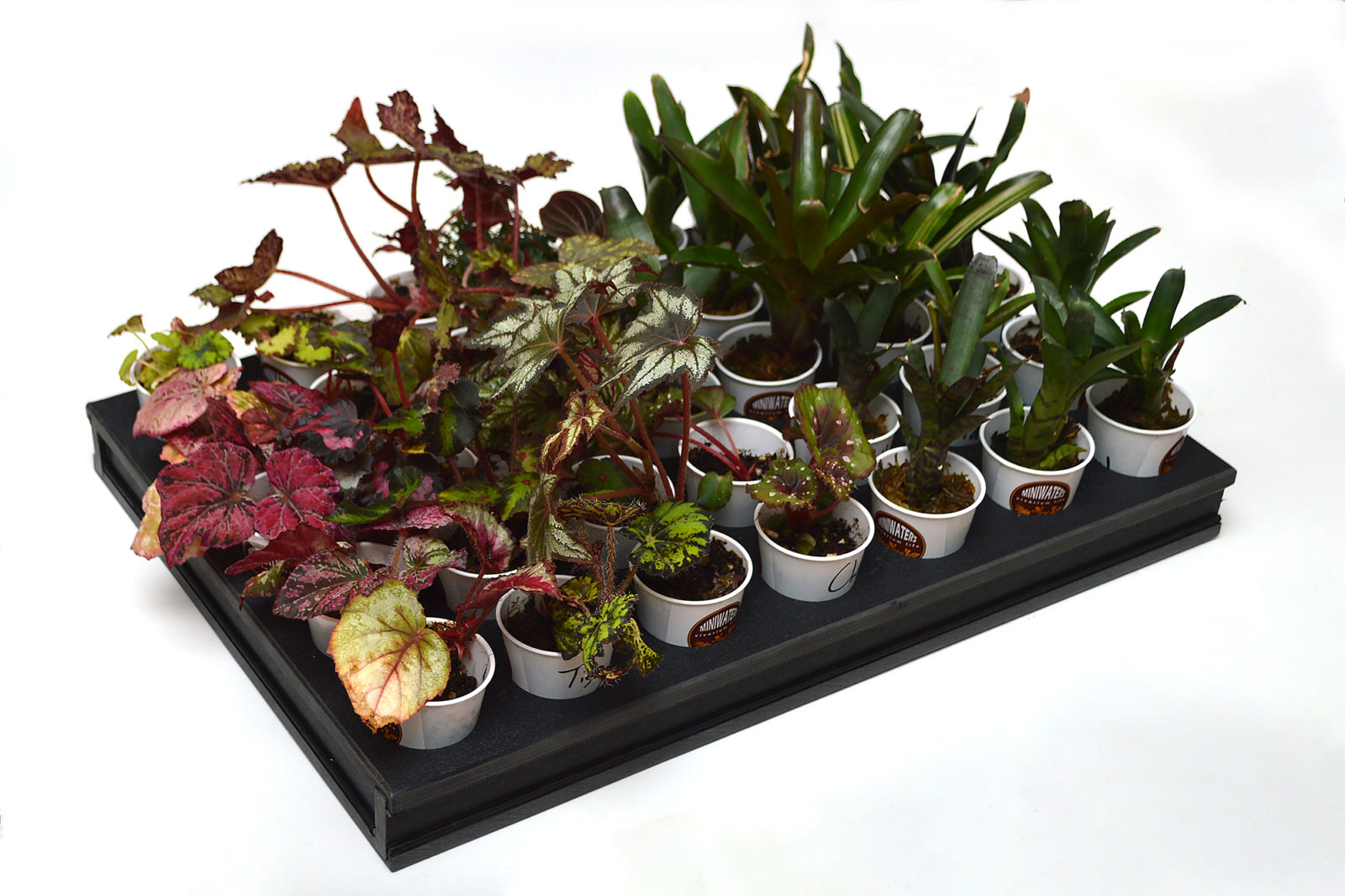
The Plants Are The Frags
Just remember that. While a 20 gallon aquarium converted to a vivarium may only have room for a pair of poison dart frogs, it could potentially hold 10 to 20 or more distinct plant varieties. Which is why while MiniWaters does aspire to provide you with some amphibian life now and again (depending on the libidos of our frogs), the really interesting part is our production of clean, safe, low-risk plants for your customer’s vivariums.
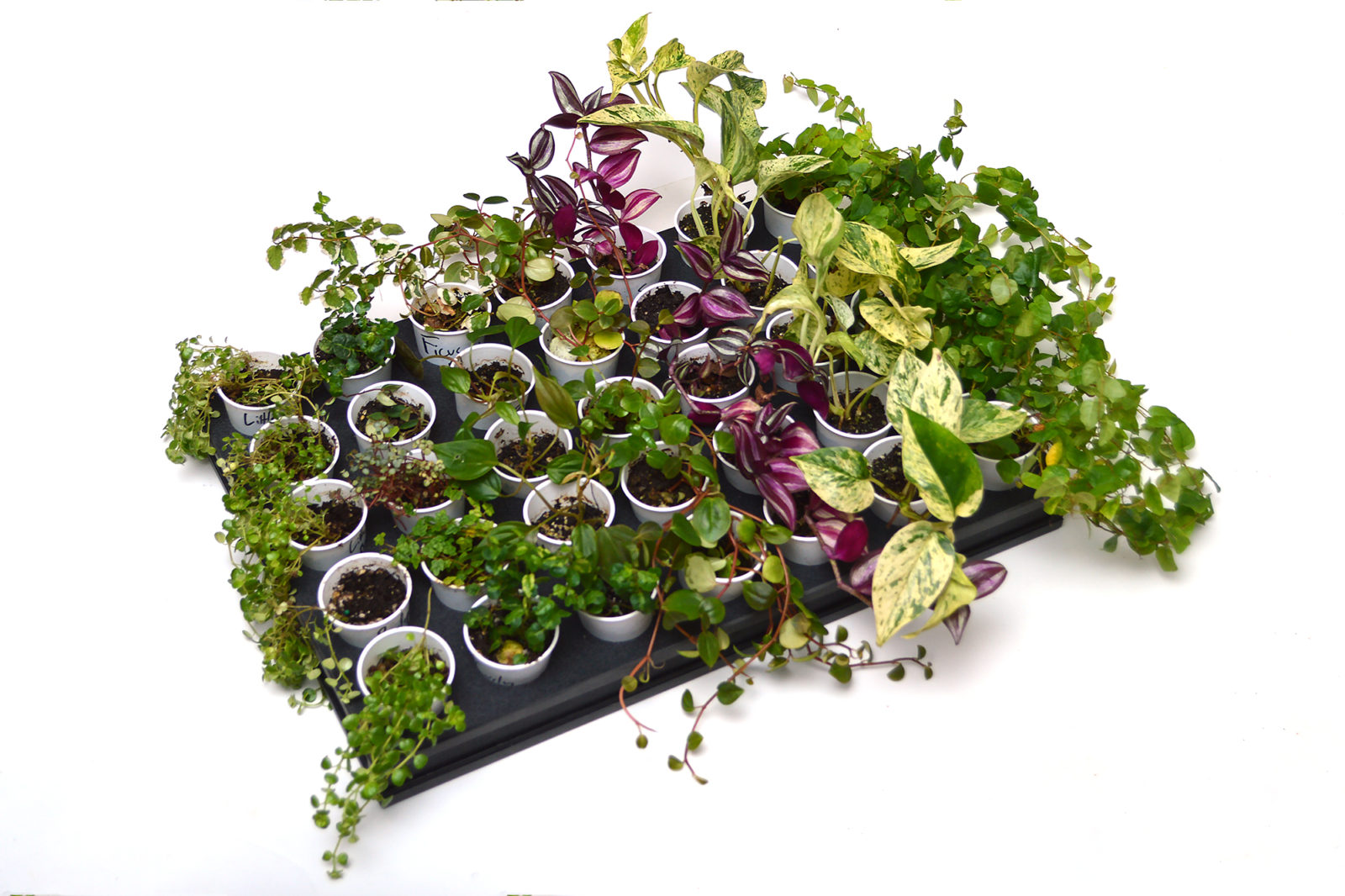
Why? Because if you ask around for 5 minutes, you’ll hear all sorts of warnings and concerns about pesticides, fertilizers, disease and pest risk associated with plants produced for mainstream applications and houseplants. You obviously don’t encourage your customers to shop at any random box store to get their filters or next fish for their tank, so why would you for any second say, “oh, head over to the big hardware store and get yourself a pot of Pothos” to mix with the $100 pair of dart frogs you just sold them?
No, the plants are the frags, and the ones we aim to produce and offer are the lowest-risk we can think of. We have literally hundreds of varieties on hand, some quite rare and only infrequently available…not just something you can find anywhere.
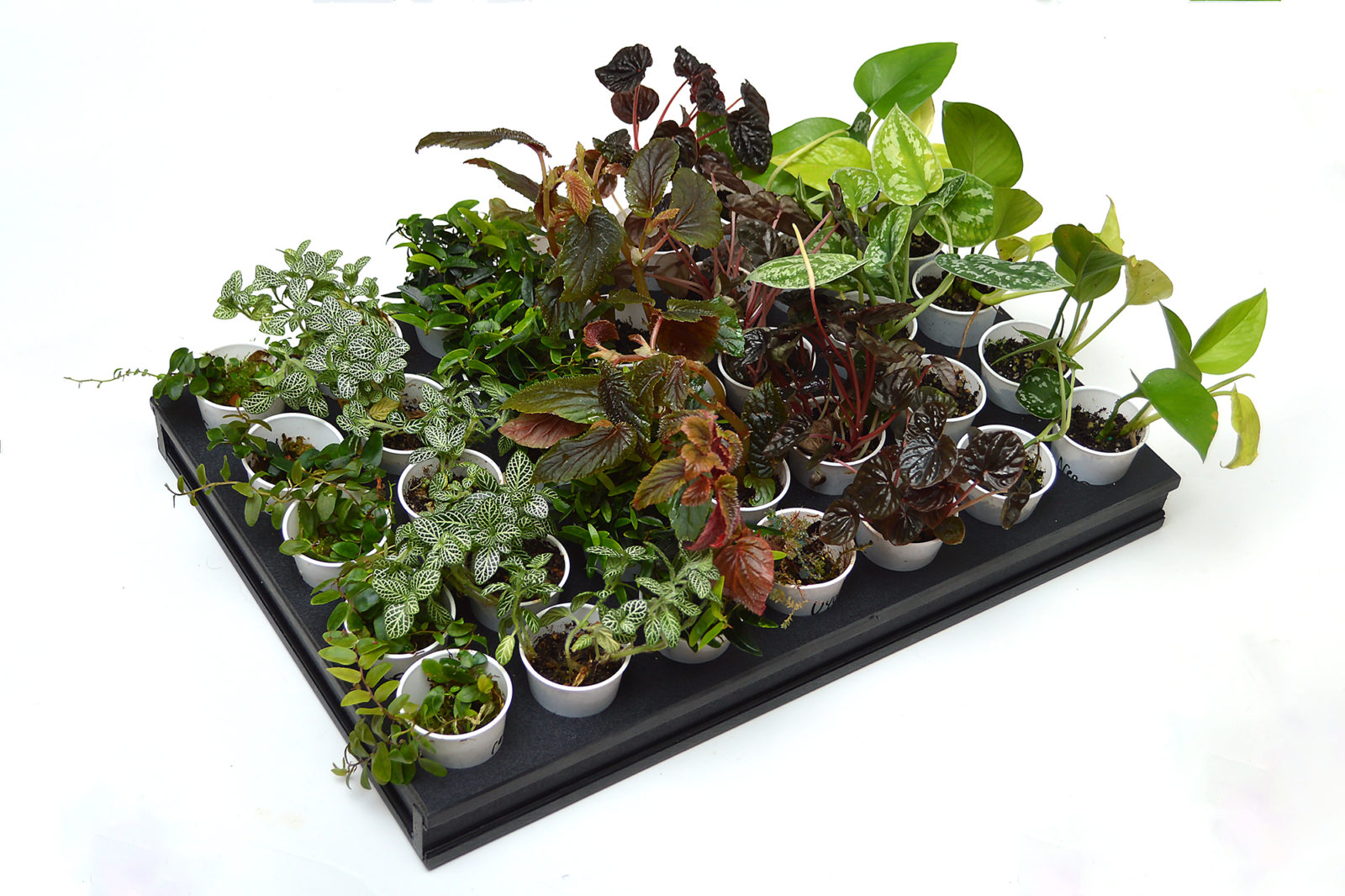
And they can be used in so many different ways…maybe you’re not all that into the vivarium craze, but paludariums and ripariums aren’t nearly as much of a stretch for an aquarium shop, and much of what we produce has applications for any land section you might need to plant!
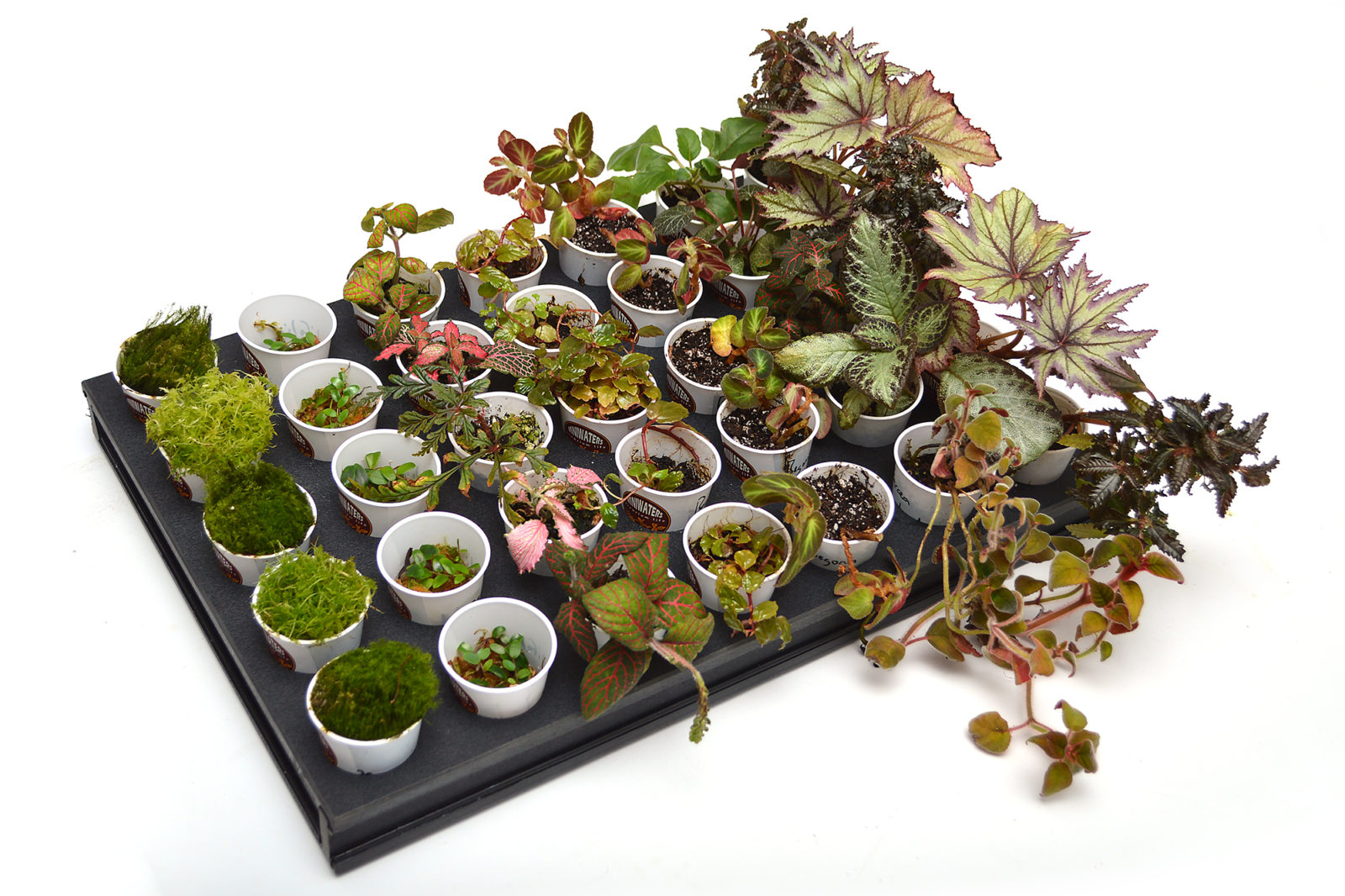
The Perfect Companion Offering
I’m not asking you to leave your aquariums for a new love. I am, however, professing that perhaps you can be a bit polyamorous when it comes to your glass box passions.
What draws people into the world of aquariums is no different than what attracts people to vivariums. Not everyone is ready to dedicate themselves to the challenge of keeping a slice of the reef, and sometimes they don’t come to that realization until after they’ve tried. And while I strain to think of how one could become bored with an aquarium, it absolutely happens.
So when that aquarist walks into your shop, bored or frustrated, what do you offer up? I propose it be a vivarium. It’s so simple that anyone can “add on” if they’re successful aquarium hobbyists, and yet if they can’t hack it with a fish tank, this may just be the perfect option for the person who simply wants a piece of the tropics in their lives, and isn’t about to settle for faux colored gravel and some plastic plants.
It’s Time To Make Your Move
If you get where I’m coming from, and see the opportunity give me an email or call (218-206-1225) and I’ll be glad to get you started. MiniWaters is *not* your one-stop vivarium shop, at least not today, but we do produce a very important piece of the puzzle, and we’re delighted to help you get started.
Remember…
- Wholesale Inquiries
- Why we produce and offer vivarium plants
- What your customers will learn when they visit the web address on our packaging!
- Need an immediate conversation? Call MiniWaters at 218-206-1225

